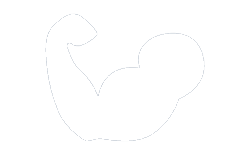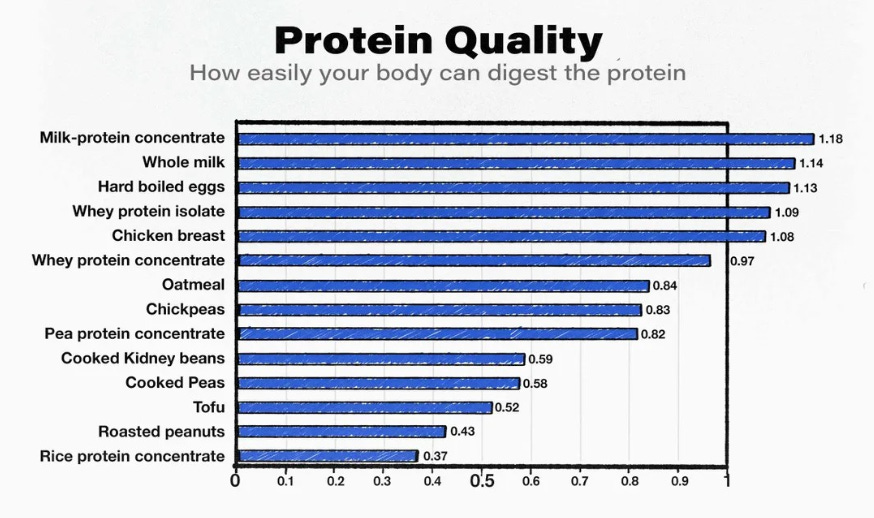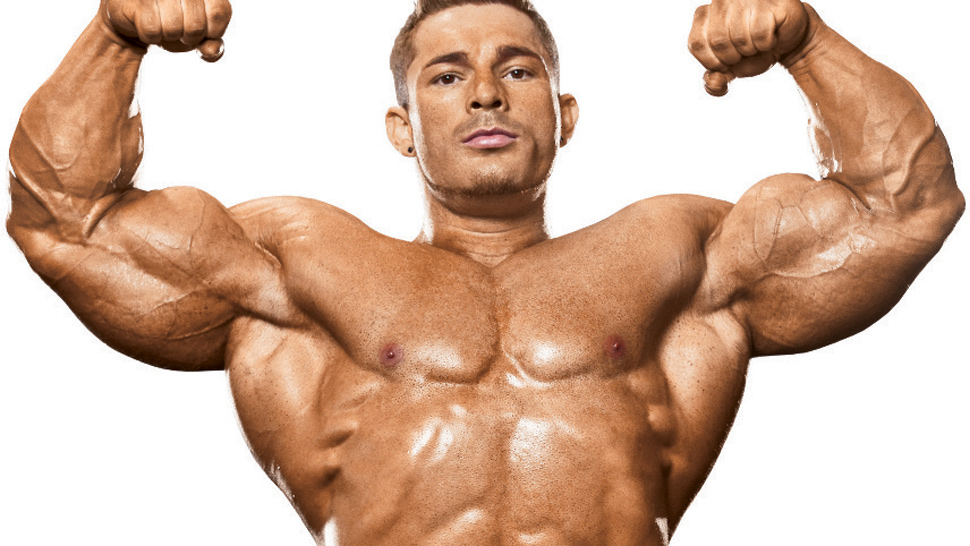· weightlifting · 16 min read
The Best Way To Lose Chest Fat In 2024
Are you struggling with excess chest fat and looking for effective ways to address it? In this comprehensive guide, we will delve into the causes of chest fat, the associated risks, and the best strategies to lose it.
Are you struggling with excess chest fat and looking for effective ways to address it? In this comprehensive guide, we will delve into the causes of chest fat, the associated risks, and the best strategies to lose it. Whether it’s hormonal imbalance, excess body fat, or a lack of exercise, we’ll explore the factors contributing to chest fat accumulation. We’ll discuss the potential health risks and decreased self-confidence associated with excess chest fat, highlighting the importance of addressing this issue.
We’ll provide valuable insights into the most effective exercises and dietary changes that can help you reduce chest fat. From push-ups and dumbbell flyes to incorporating lean protein and healthy fats into your diet, we’ve got you covered with practical tips to achieve your fitness goals. So, if you’re ready to take control of your chest fat and embark on a journey towards a healthier, more confident you, keep reading to discover the best ways to tackle this common concern.
What Is Chest Fat?
Chest fat, also known as gynoid fat distribution, refers to the accumulation of excess fat in the chest area of the body, which can affect individuals striving for a lean chest and a healthy lifestyle.
This type of fat distribution can be particularly challenging to reduce, often requiring a comprehensive approach that involves targeted exercise, proper nutrition, and overall body fat reduction. The presence of excess chest fat can not only impact one’s physical appearance but also have implications for overall health and well-being.
Striving for a balanced, healthy lifestyle and focusing on building muscle while reducing body fat can significantly help in addressing the challenges associated with reducing chest fat. It’s important to consult with fitness and healthcare professionals to create a personalized plan that suits individual needs and goals.
TIP: Are you logging your lifts? (10x your gains with our app)
What Causes Chest Fat?
The development of chest fat can be attributed to various factors such as hormonal imbalances, excess body fat, lack of exercise, and poor diet choices.
These factors often lead to an increase in estrogen levels or a decrease in testosterone, contributing to the accumulation of fat in the chest area. Sedentary lifestyles and inadequate exercise can further exacerbate this issue, as physical activity plays a crucial role in regulating hormonal balance and controlling body fat distribution.
Dietary patterns high in processed foods, sugar, and unhealthy fats can lead to weight gain and fat deposition, including in the chest region.
Hormonal Imbalance
Hormonal imbalances, such as elevated estrogen levels and reduced testosterone levels, can contribute to the development of excess chest fat, a condition known as gynecomastia.
These imbalances can disrupt the body’s natural fat distribution, causing an increased accumulation of fat tissue in the chest area. Estrogen, commonly associated with female characteristics, plays a significant role in this process by promoting fat storage, while decreased testosterone levels can further exacerbate the accumulation of chest fat. Achieving hormone balance is crucial not only for reducing chest fat but also for overall well-being and health.
In cases of gynecomastia, addressing the underlying hormonal factors is essential for effective reduction of chest fat and restoring a more balanced physique.
Excess Body Fat
Excessive body fat, particularly in the chest area, can lead to the challenge of spot reduction, requiring targeted efforts through specific exercises such as aerobic workouts to address chest fat.
When it comes to body fat distribution, it’s important to understand that spot reduction, or the idea of targeting specific areas for fat loss, is a commonly debated concept in the fitness industry. While aerobic exercises play a crucial role in overall fat loss, it’s essential to recognize that they are not specifically effective for spot reduction in the chest area. Instead, incorporating a well-rounded exercise routine that includes strength training and a balanced diet is key to achieving a healthier body composition and reducing chest fat.”
Lack of Exercise
Inadequate physical activity and a lack of targeted exercises, including resistance training and upper body workouts, can contribute to the persistence of chest fat and the challenge of reducing it effectively.
This emphasizes the significance of incorporating specific workout regimens that focus on strengthening the chest muscles and targeting the reduction of fat in this area. Incorporating exercises such as push-ups, chest presses, and dumbbell flyes can effectively engage the chest muscles and aid in reducing excess fat.
Engaging in a consistent exercise routine that includes both cardio and targeted resistance training can significantly impact chest fat reduction, promoting overall physical and cardiovascular health.
TRENDING: Ultimate Upper Body Warmup Guide (10x Your Gains)
Poor Diet
Unhealthy dietary habits, characterized by inadequate nutrition and an imbalance of healthy fats, can contribute to the persistence of chest fat, highlighting the need for dietary changes to address this issue.
These poor diet choices often lead to an accumulation of excess fat in the chest area. By modifying one’s diet and focusing on nutritional balance, individuals can effectively reduce chest fat. Incorporating healthy fats, such as those found in avocados, nuts, and fatty fish, can aid in achieving this goal. Making conscious efforts to prioritize whole foods, lean proteins, and fiber-rich vegetables can also play a significant role in promoting a healthier distribution of body fat, including reduced chest fat.”
What Are The Risks Of Having Excess Chest Fat?
The presence of excess chest fat poses potential risks, including an increased likelihood of heart disease and a negative impact on self-confidence due to alterations in body composition.
Excessive chest fat is often associated with poor cardiovascular health, as it can contribute to high levels of cholesterol and increase the risk of developing conditions such as atherosclerosis. Individuals with excess chest fat may experience psychological distress and a decrease in self-esteem due to concerns about their appearance, affecting their overall well-being.
Understanding the relationship between chest fat and overall body composition is crucial in addressing these health risks and promoting a balanced and healthy lifestyle.
Increased Risk of Heart Disease
Excessive chest fat is linked to an elevated risk of heart disease, emphasizing the importance of cardiovascular exercise and lifestyle modifications to mitigate this health concern.
Regular cardiovascular exercise, such as running, swimming, or cycling, can help reduce chest fat and improve overall cardiovascular health. Adopting a balanced diet and making lifestyle adjustments, like limiting alcohol intake and quitting smoking, play a crucial role in preventing heart disease. These preventive measures help in managing weight, cholesterol levels, and blood pressure, all of which are significant factors in reducing the risk of heart disease. Making positive lifestyle changes can have a substantial impact on your heart health and overall well-being.
Decreased Self-Confidence
The presence of excess chest fat can lead to reduced self-confidence, affecting individuals on their journey towards a healthy lifestyle and a fulfilling fat loss journey.
This can have a significant impact on psychological well-being and body image. Individuals may experience emotional distress, struggle with self-acceptance, and encounter challenges in maintaining a positive outlook.
The implications of chest fat on self-confidence can also influence social interactions and overall quality of life. Addressing these emotional aspects of chest fat reduction is crucial in supporting individuals in their pursuit of improved self-esteem and confidence.
How To Lose Chest Fat?
Effective strategies to lose chest fat encompass a combination of targeted exercise routines, dietary modifications, and potential interventions such as hormonal therapy in specific cases.
Regular cardiovascular and strength training exercises, such as running, swimming, and weightlifting, can aid in reducing overall body fat, including the chest area. Incorporating high-intensity interval training (HIIT) can further boost metabolism and promote fat loss.
Dietary changes, such as reducing refined sugars and saturated fats while increasing protein and fiber intake, can support a healthier body composition. In cases where hormonal imbalances contribute to chest fat, medical consultation for specialized treatments or therapy may be considered.
Exercise
Incorporating targeted exercise regimens, including high-intensity interval training and strength training, is crucial for achieving effective chest fat reduction and promoting a lean chest.
This type of training not only helps in burning calories during the workout but also continues to burn calories post-exercise, aiding in overall fat reduction.
Incorporating specific resistance exercises such as chest presses, push-ups, and dumbbell flyes can significantly target the chest muscles, leading to improved muscle tone and reduced fat accumulation.
YOU MIGHT LIKE: “Chest and Tricep Workout With Dumbbells For Crazy Gains”
It’s essential to follow a well-rounded workout routine that includes both cardio and strength exercises to maximize the impact on chest fat reduction.
Consistency and progressive overload in training are also vital for long-term success in achieving a leaner chest.
Diet Changes
Implementing dietary changes, guided by balanced nutrition and strategic fat loss tips, plays a pivotal role in addressing chest fat and optimizing the body’s composition.
By incorporating nutritional strategies aimed at reducing overall body fat, individuals can effectively target chest fat. Dietary modifications, such as increasing protein intake and consuming a variety of fresh fruits and vegetables, can support fat loss goals. Controlling portion sizes, limiting refined sugars and processed foods, and staying hydrated are crucial steps for managing chest fat.
The role of specific nutrients, such as omega-3 fatty acids found in fish and nuts, also influences chest fat reduction and overall body composition.
Hormone Balancing
Addressing hormonal imbalances through targeted therapy to lower estrogen levels and increase testosterone levels may be essential in cases where chest fat reduction is influenced by hormonal factors.
Regulating hormones can play a significant role in managing the distribution of body fat, particularly in the chest area. Hormonal treatments aimed at modulating estrogen and testosterone levels hold promise for individuals seeking to address specific fat accumulation patterns.
By understanding the impact of hormone regulation on fat distribution, individuals can explore personalized approaches to achieve their desired physique and overall well-being.”
Surgery
In severe cases, surgical options such as liposuction or specific interventions for gynecomastia may be considered for targeted chest fat removal and aesthetic improvements.
These surgical procedures can play a significant role in addressing persistent chest fat concerns, especially when traditional methods have proven insufficient. Liposuction, for instance, offers a minimally invasive approach to removing excess fat deposits, resulting in a more contoured and defined chest appearance. Similarly, specialized treatments for gynecomastia target the glandular tissue and excess skin, offering a tailored solution for individuals dealing with this condition.
Prior to considering surgical interventions, it is crucial to thoroughly evaluate the potential benefits and considerations associated with chest fat removal through medical procedures.
What Are The Best Exercises To Lose Chest Fat?
When targeting chest fat reduction, incorporating exercises such as push-ups and bench press into a comprehensive workout regimen is considered an effective way to achieve desired results.
These exercises primarily target the pectoral muscles, helping to tone and strengthen the chest area. Incorporating dumbbell flyes, cable crossovers, and chest dips can further enhance the fat-burning process. By engaging in a combination of resistance training and cardiovascular exercises, individuals can expedite the reduction of chest fat while also promoting overall fitness and muscle definition in the chest region. Incorporating high-intensity interval training (HIIT) can elevate the body’s metabolic rate, contributing to a more efficient fat-burning process within the chest area.
Push-Ups
Push-ups are a fundamental component of a chest fat burning workout, targeting the upper body muscles and contributing to overall fat reduction in the chest area.
They are a versatile exercise that engages multiple muscle groups, including the chest, shoulders, triceps, and core. By incorporating push-ups into your workout routines, you can increase upper body strength and improve muscle definition, which can lead to a more toned and sculpted chest.
Push-ups are effective in boosting metabolism and promoting fat loss, making them an essential part of any chest fat burning regimen. Their ability to engage the chest muscles directly contributes to reducing excess fat in that area, helping to achieve a leaner and more defined chest.
Dumbbell Flyes
Incorporating dumbbell flyes into a resistance training regimen is beneficial for chest fat reduction, emphasizing the targeted engagement of chest muscles and the overall impact on fat reduction.
This resistance exercise specifically targets the pectoral muscles, stimulating muscle growth and strength in the chest area. By engaging in targeted muscle engagement, the chest fat-reducing techniques are bolstered, leading to a more defined and sculpted chest. Dumbbell flyes also encourage the burning of excess fat in the chest region, acting as an effective method for reducing overall chest fat.
The efficacy of dumbbell flyes in chest fat reduction lies in their ability to promote muscle activation and fat burning simultaneously.
Incline Bench Press
Engaging in incline bench press exercises is essential for effective chest fat reduction, leveraging the benefits of weightlifting and targeted chest muscle development.
It is crucial to incorporate incline bench press into your workout routine for its ability to effectively target the upper chest area, aiding in the reduction of chest fat. By engaging in this specific weightlifting technique, individuals can stimulate the growth and strengthening of their chest muscles while simultaneously promoting fat loss in the targeted area. Incline bench press helps in sculpting and defining the upper chest, contributing to a more toned and lean physique. Its significance as one of the key chest fat-targeting exercises cannot be overlooked in any comprehensive workout regimen.
Cardio Exercises
Incorporating cardio exercises, particularly high-intensity interval training and aerobic workouts, is vital in promoting chest fat reduction and optimizing overall cardiovascular health.
These fat-burning cardio routines play a crucial role in targeting specific areas of the body, including the chest, where excess fat tends to accumulate. Engaging in aerobic training not only helps in shedding overall body fat but also plays a significant role in reducing chest fat.
Incorporating specific cardio exercises like running, cycling, and swimming can effectively contribute to the reduction of chest fat and improve muscle tone in the chest area.
What Foods To Eat To Reduce Chest Fat?
Incorporating specific foods into the diet, such as lean protein sources, is crucial to reduce and burn chest fat effectively while optimizing overall nutrition and dietary habits.
These fat-reducing foods not only aid in strengthening and toning the chest muscles but also contribute to a balanced and healthy diet. It’s vital to consider the nutritional value of the foods consumed, as this can impact the body’s ability to shed excess chest fat.
Foods rich in protein, such as poultry, fish, tofu, and legumes, assist in boosting metabolism and promoting muscle growth, thereby supporting the reduction of chest fat. Integrating essential dietary components like fiber, antioxidants, and healthy fats can further enhance the body’s fat-burning process.
Lean Protein
Emphasizing the consumption of lean protein sources is essential for muscle-building and the implementation of effective fat loss strategies aimed at reducing chest fat and optimizing body composition.
Lean protein plays a significant role in facilitating muscle repair and growth, which is crucial for individuals focused on sculpting a leaner chest area. Incorporating a protein-rich diet can aid in reducing overall body fat, including stubborn chest fat, while promoting a toned and defined physique. By prioritizing lean protein intake, individuals can enhance their metabolism, increase satiety, and support the development of lean muscle mass, ultimately contributing to the reduction of excess fat in the chest region.
Healthy Fats
Incorporating healthy fats into the diet contributes to chest fat reduction and supports the journey towards effective fat loss through strategic dietary changes and nutritional adjustments.
By emphasizing the significance of healthy fats in chest fat reduction, individuals can optimize their dietary enhancements to promote a balanced approach to fat loss. Healthy fats play a crucial role in the body’s metabolic processes and can aid in reducing overall body fat, including chest fat. These fats provide a feeling of satiety, which can help manage cravings and maintain a sense of fullness, thus supporting the fat loss journey.
Incorporating healthy fats can also contribute to hormonal balance, further amplifying the impact of dietary modifications on chest fat reduction.
Fibrous Vegetables
The inclusion of fibrous vegetables in the diet is beneficial for chest fat reduction, offering valuable nutrients and essential elements to support effective dietary practices aimed at reducing chest fat.
These vegetables are rich in fiber, which helps in promoting a feeling of fullness and may reduce overall calorie intake, contributing to weight management, including the reduction of chest fat. Fibrous vegetables are low in calories and high in essential vitamins and minerals, providing a nutritional enhancement to the diet. Incorporating a variety of fibrous vegetables, such as leafy greens, broccoli, and Brussels sprouts, can also aid in improving digestion and maintaining a healthy gut, which is important for overall well-being and weight management.
Whole Grains
Whole grains play a pivotal role in chest fat reduction by providing essential nutrients and supporting the body’s nutritional needs throughout the fat loss journey.
Their rich fiber content helps in regulating appetite, keeping you feeling full for longer periods, and reducing the consumption of unhealthy snacks that contribute to chest fat accumulation. Whole grains offer a steady supply of energy and aid in maintaining stable blood sugar levels, preventing the overconsumption of calories that may lead to fat storage in the chest area. By integrating whole grains into the diet, individuals can effectively manage their weight and reduce excess fat, especially in the chest region.
Frequently Asked Questions
What is the best way to lose chest fat?
The best way to lose chest fat is through a combination of regular exercise, a healthy diet, and targeted chest exercises.
Can I spot reduce chest fat?
No, it is not possible to spot reduce fat in a specific area. Losing chest fat requires overall weight loss through a combination of diet and exercise.
What exercises can help me lose chest fat?
Some effective exercises for losing chest fat include push-ups, dumbbell flyes, and chest presses. It is also important to incorporate cardio exercises to burn overall body fat.
How long does it take to lose chest fat?
The time it takes to lose chest fat varies for each individual, but with a consistent exercise and healthy eating routine, it is possible to see results in as little as 4-6 weeks.
Are there any foods that can help reduce chest fat?
While there is no specific food that can target chest fat, incorporating a healthy and balanced diet that is low in calories and high in protein can aid in overall weight loss and reducing chest fat.
Can hormones affect chest fat?
Yes, hormonal imbalances can contribute to excess chest fat in some individuals. If you suspect a hormonal imbalance, it is important to consult with a doctor for proper diagnosis and treatment.






